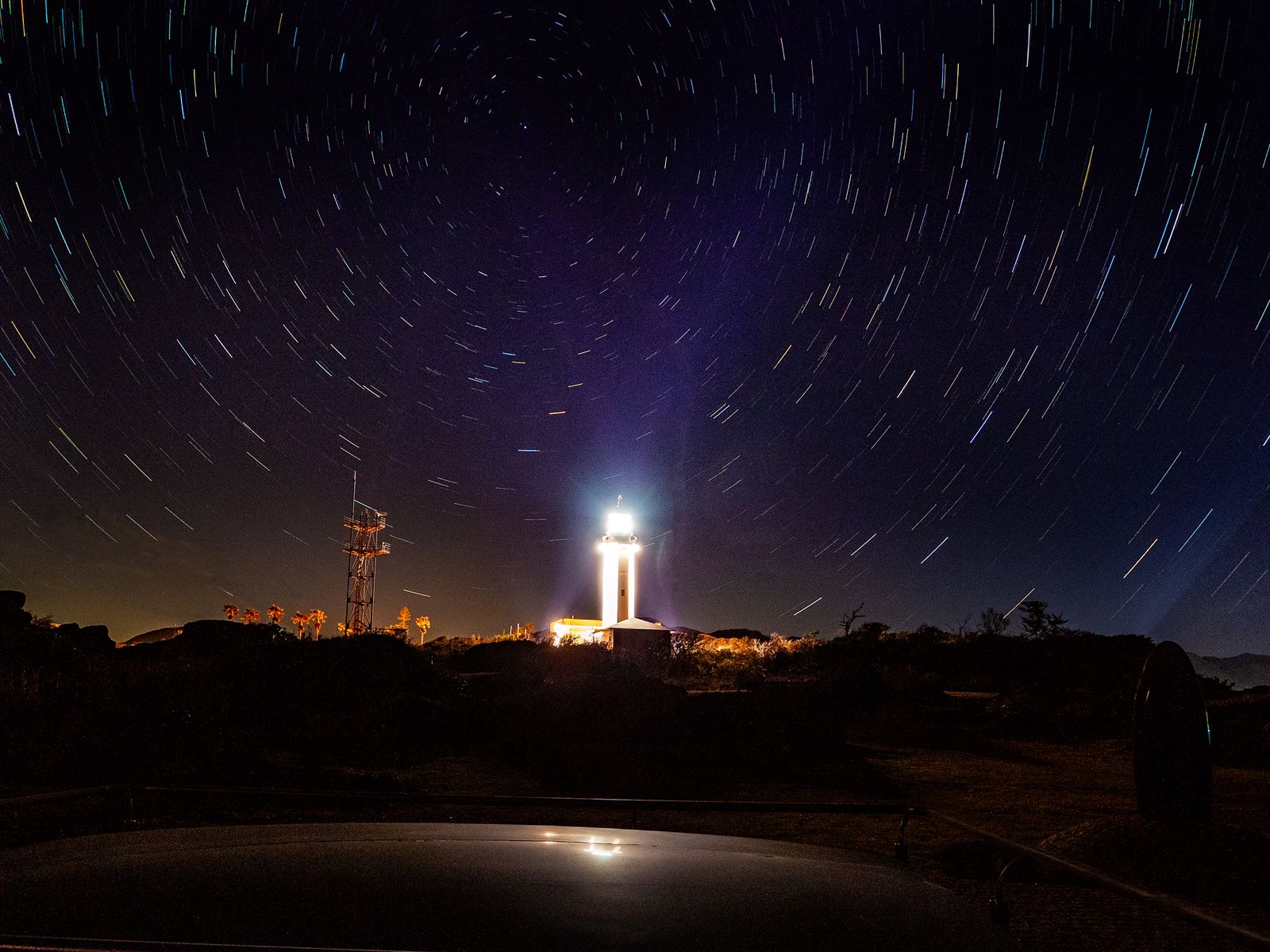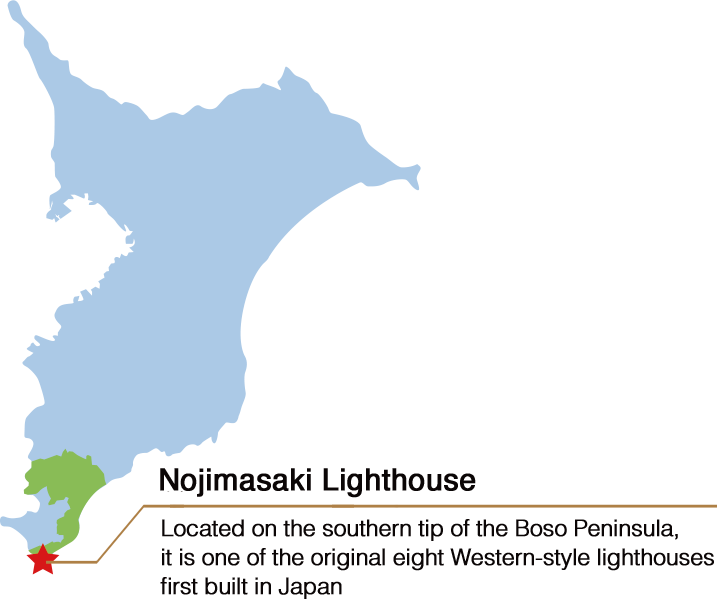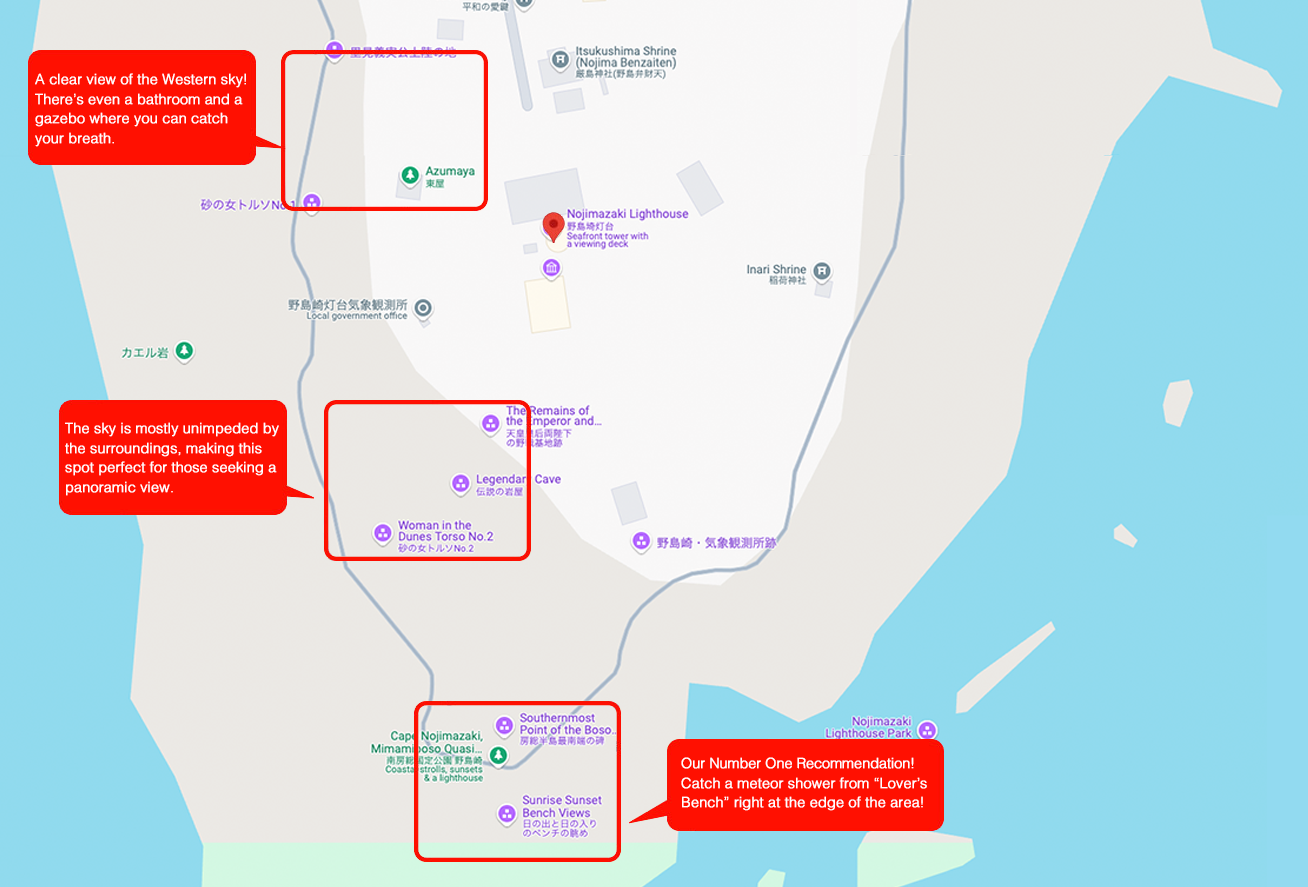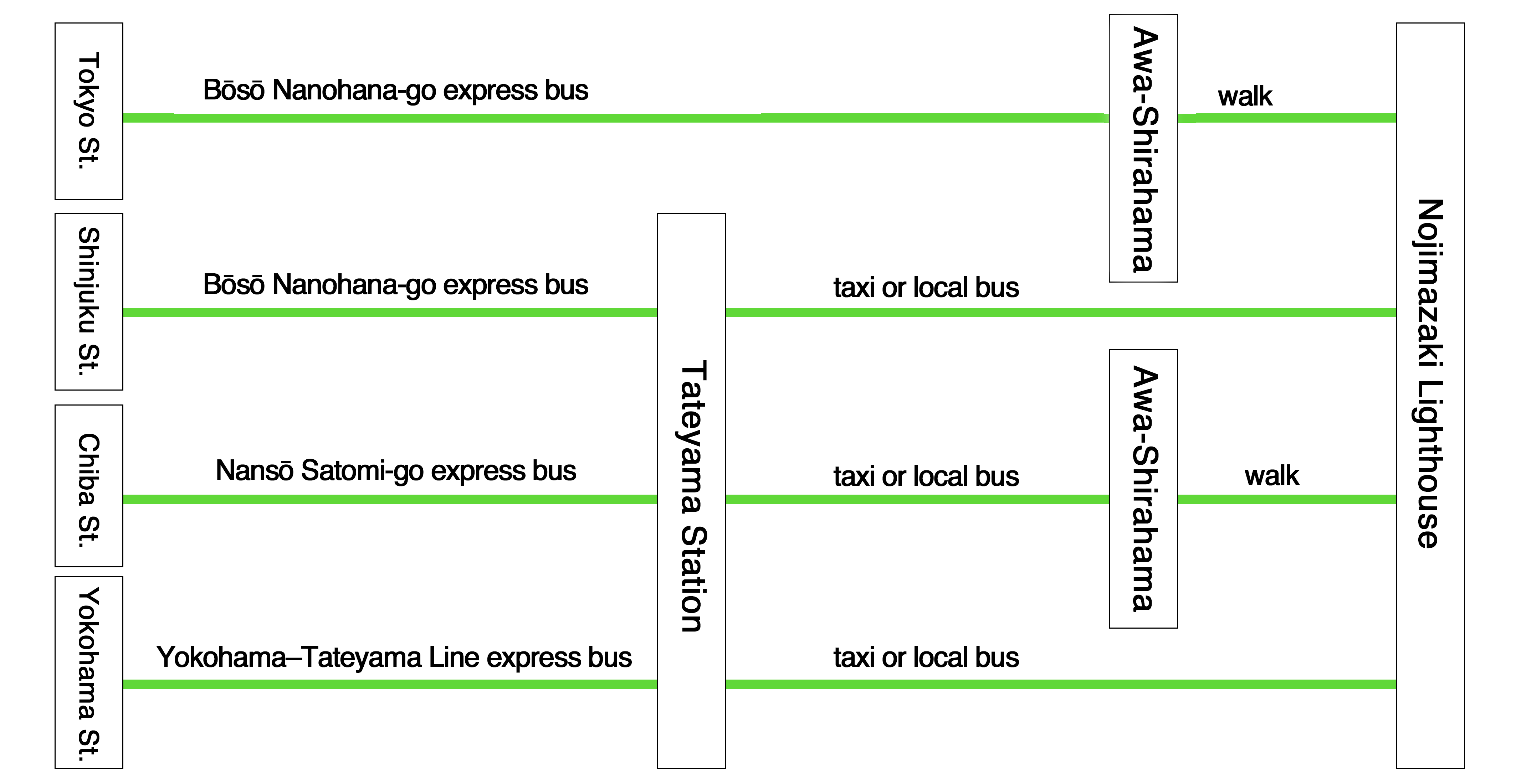
Stargazing at Nojimasaki Lighthouse
Blessed with clear skies that shine bright with beautiful stars,
Nojimasaki Lighthouse and its surroundings offer up a perfect stargazing location.


Lighthouses, as “guideposts of the sea” utilize their light and tower structure to inform sailors of dangers like reefs.
Yet another guidepost of the sea, starlight has served a similar role to lighthouses since ancient times.
Look for the Phantom Star, Canopus.
Sunset, the Night Sky, and Sunrise from Minamiboso’s Nojimasaki Lighthouse.
Stargazing at Minamiboso, Chiba Prefecture
~See How Nojimasaki Lighthouse Continues to Guide Sailors to This Day~
Nojimasaki Lighthouse, built in 1869 based on the design of French engineer Léonce Verny, is one of the original eight Western-style lighthouses first built in Japan.* Often called “Swan Lighthouse” and included in Japan’s Top 50 Lighthouses list, the beautiful octagonal lighthouse is a nationally registered Tangible Cultural Property.
The lighthouse had long been a favorite among tourists to Minamiboso, when in 1954, the Lighthouse Association that managed the property officially opened it to tourists at the urging of the Japan Coast Guard and local organizations. The lighthouse has continued to welcome guests for over 67 years since then, attracting around 70,000 tourists each year.
Among over 3,000 lighthouses in Japan, Nojimasaki Lighthouse is one of only 16 that you can climb. From its observation deck, which sits atop a 24 meter-tall spiral staircase, you can take in magnificent views of the vast Pacific Ocean and the many ships that navigate Tokyo Bay by the glow of the lighthouse.
Additionally, the lighthouse was renovated in March of 2019 and now features an exhibition hall, “Kirarin-kan,” in the adjacent building, where you can learn about the lighthouse’s history, navigational assistance operations, and its functionality. The French-made Fresnel lens exhibited in the center of the hall–reminiscent of glass artwork–conveys the historical and cultural value of the lighthouse.
Every year on November 1st, “Lighthouse Day” is celebrated, and Nojimasaki Lighthouse hosts special events that draw in droves of tourists and lighthouse lovers. It continues to contribute to local tourism, as a symbol of Minamiboso.
*One of the Original Eight Western-Style Lighthouses First Built In Japan
Western-style lighthouses were first built in Japan in the late Edo period (1603-1868), coinciding with the country’s opening to the West. In 1866, the Tokugawa Shogunate signed treaties with the United States, British Empire, German Empire, and Holland, which ordered the construction of lighthouses in eight locations including Tokyo Bay (Kannonzaki Lighthouse, Nojimasaki Lighthouse, Kashinozaki Lighthouse, Mikomotoshima Lighthouse, Tsurugisaki Lighthouse, Iojimazaki Lighthouse, Cape Sata Lighthouse, and Shionomisaki Lighthouse). At the time, Japan didn’t have access to the technology required to construct Western-style lighthouses, so the Tokugawa Shogunate purchased lenses and machinery from Britain and France, and requested their guidance in the lighthouses' construction. After the fall of the Shogunate, the new Meiji government inherited the project, and a team of French engineers led by Verny began the construction in earnest.
The Sommelier of the Stars: 4 Reasons to See the Stars in Minamiboso
- Gorgeous Stars (See the Milky Way with Your Own Eyes)
- The index that measures the brightness of a night-sky puts Minamiboso at 20.8. This is close to the brightness score at which you can make out the complicated structure of the Milky Way Galaxy, 21 or higher, and thus, Minamiboso belongs to the grouping of regions between 20 and 21 in which “the Milky Way Galaxy is highly visible.”
- Great Access
- Minamiboso is easily accessible from the Tokyo metropolitan center, being just a two-hour drive along the Tokyo Bay Aqua-Line. The coastal road near the stargazing spots features many parks, parking lots, and roadside stations where you can park your car, so those of you bringing leisure seats, outdoor chairs, telescopes, cameras, tripods, and other heavy equipment can rest easy.
- An Unobstructed View
- Thanks to Minamiboso’s location at the southern tip of the Boso Peninsula, you can get unobstructed views of the East, South, and West. Here you can see stars hanging near the horizon that are typically hidden when viewed from an urban or mountainous region. In addition to panoramic views of shooting stars, you can also witness the magic hour of the sunrise and sunset, and the moon road that forms with the rising and setting of the moon.
- An Abundance of Unique Land Formations
- Minamiboso is home to areas where Earth’s crust was pushed up due to the collision of the Pacific plate and Eurasia plate. This land was then eroded by ocean waves, resulting in an abundance of unique land formations. Gazing out at and taking pictures of the stars along with these strange formations is yet another way to enjoy Minamiboso.
Watch Meteor Showers at Nojimasaki Lighthouse!
Watch meteor showers at the Nojimasaki Lighthouse!
Why not watch a meteor shower at Nojimasaki Lighthouse? With its clear skies and beautiful stars, it’s perfect for meteor shower viewing. But there are two points you’ve got to keep in mind when watching a meteor shower!
2. Long Observation: It takes about 15 minutes for your eyes to adjust to a dark place. After your eyes adjust, we recommend watching the sky for at least one to two hours.
Recommended Spots for Meteor Shower Viewing
These spots are just a few minutes walking from parking lots! Come on by with a leisure seat or outdoor chair! It’s easy to trip and fall when walking in the rocky areas, so please bring a light with red film attached and watch your step.
Meteor Showers Come at the Same Time Every Year
Meteor showers form when the debris a comet leaves in its wake collides with the earth, creating the phenomenon we call shooting stars. They tend to occur during the same period every year.
The following three meteor showers, which fall in abundance at the same time each year, are known as the Three Major Meteor Showers.
| Period | Peak Date | |
|---|---|---|
| Quadrantid meteor shower | Dec. 28~Jan. 12 | Around Jan. 4 |
| Perseid meteor shower | Jul. 17~Aug. 24 | Around Aug. 13 |
| Gemini meteor shower | Dec. 4~Dec 17 | Around Dec. 14 |




